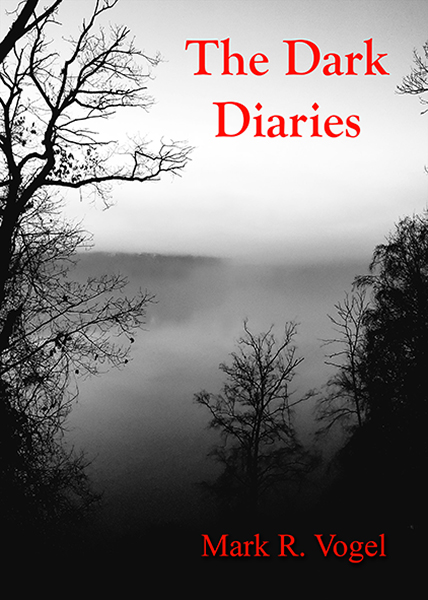The first attempt to bring Jason Voorhees together with Freddy Kruger occurred during the planning stages for John Carl Buechler’s Friday the 13th Part VII: The New Blood. However, when the respective owners of the horror icons, Paramount Pictures and New Line Cinema, couldn’t reach an agreement, the concept was indefinitely postponed. The flame of the idea blazed anew when, with Rob Hedden’s Friday the 13th Part VIII: Jason Takes Manhattan, the Friday the 13th franchise dipped below 15-million mark for the first time, thereby prompting Paramount to sell the rights to New Line. As suggested by the rushed, careless presentation of Jason’s final solo cinematic outing, Adam Marcus’s Jason Goes to Hell: The Final Friday, New Line acquired the character for the sole purpose of presenting the long-awaited rivalry and, thus, Ronny Yu’s Freddy vs. Jason was born.
Four years after Freddy Kruger’s (Robert Englund) reign of terror had ended, the nightmare demon–distraught that the adults of Springwood are maintaining an oral blackout of the notorious figure’s title (thus barricading any mental imagery which might evoke the assassin) as they suppress the dreams of those familiar with him via an experimental drug called Hypnocil (thus eradicating an avenue for Freddy to reenter the real world), Kruger–in the guise of Jason’s dominating mother, Pamela (Paula Shaw)–awakens Voorhees (Ken Kirzinger) and sends him to Elm Street in order to evoke fear, dread, and, ultimately, the memory of what came before. Kruger’s plan is successful. However, much to his dismay, Crystal Lake’s mass murderer will not abate in his bloodlust after the mastermind’s reemergence as the former takes victim after victim from Kruger, thereby prompting a battle between the two killers.
A modern day clash of the (horror) titans is old hand for Hollywood. Reverting back to the Golden Age, many battles, even within the genre, precede Freddy vs. Jason, some of the more notable being Roy William Neill’s Frankenstein Meets the Wolf Man and Erle Kenton’s House of Dracula and House of Frankenstein. However, unlike Hollywood’s famed monsters, perhaps due to the flippant nature in which modern audiences treat their Big Screen antagonists-cum-antiheros, little critical weight is attached to a contemporary alignment of iconographic figures or its storyline for most everyone who views Freddy vs. Jason is partisan. As such, no one expects Yu’s production to be a rewarding mediation upon life and, as a consequence, the only manner in which such a film could fail is if it weren’t to aptly meet its unrepentantly (and excusably) escapist agenda.
It is surprising–given the film’s budget and fan expectation, especially when one takes into account the extended histories of the central characters–that New Line hired two rookie screenwriters, Damian Shannon and Mark Swift, to set the work in motion (but not surprising that David Goyer, the pen behind the Blade films, did uncredited rewrites). Conversely, and wisely, the studio handed the feature to veteran action and horror director Ronny Yu as he takes his experience with Bride of Chucky and renders an interpretation of the characters analogous to a Russian reading of the American Civil War (the most notable fixture of the production in this respect being that the film doesn’t look like either an NOES or F13 movie). However, the extended emphasis upon Freddy is due to Robert Shaye’s influence, the producer of the A Nightmare on Elm Street films, who insisted upon having a large portion of his rival character’s back story eliminated from the script as his co-producer and creator of Friday the 13th, Sean Cunningham, stood by idly. Yet, all becomes ironic considering that Cunningham and Wes Craven, the two people responsible for the titular characters, were once a team as the fruits of their career-making labors come full circle.
As previously stated, Freddy vs. Jason is a polar affair from the beginning. As the title of Yu’s film implies, the focus of the feature is Kruger as, in an attempt to appease Jason fans, the latter racks up a far greater body count as Elm Street’s villain only manages to murder one person by film’s end (sorry, FK fans, even though the razor-fingered rogue has to first regain his strength, such is still a bad return for a day’s work). But it is with this, a general preoccupation to humor the contemporary horror aficionado, that Yu and Co. forget about what ultimately availed them to the project: long-term fan dedication. After a decade-and-a-half of faithful audiences and the performers who got them where they are, the people behind of Freddy vs. Jason owe it to both factions to bring back some of the familiar faces of Friday/Nightmare yesteryear. But, symbolic of the whole, Betsy Palmer–who played the role of Voorhees’s mother in the original Friday the 13th–though offered the opportunity to reprise her role, was not given a second opportunity to reconsider or pitched a new salary proposal after she declared the initial price for the performance to be insulting. Ironically, as die-hards are given a cursory wave, Freddy vs. Jason, though it provides brief synopses of who the characters are and how they came to be, leaves those unfamiliar with at least the charter entry in each franchise wondering why they are where they are. In truth, the hour-and-a-half production contains material that could crowd two-hour-plus affair.
In place of exposition, audiences are given a handful of references to their favorite forerunners from both franchises as the filmmakers are careful to withhold several trademark, i.e. obvious, allusions should the need for a sequel arise. Shaye’s tyrannical influence is felt once more in this capacity as Freddy’s historic moments are mentioned more often, beginning with the quip from Renny Harlin’s A Nightmare On Elm Street 4: The Dream Master, “How sweet, fresh meat,” which is recast as “How sweet, dark meat.” Chuck Russell’s A Nightmare On Elm Street 3: Dream Warriors is given two nods via the incorporation of the drug Hypnocil, which Nancy Thompson takes during the feature while in residency at Westin Hills, the hospital depicted in Freddy vs. Jason. Predictably, citations of Wes Craven’s original feature appear via the subtle insertion of a goat as the news station KRGR reemerges after premiering on Johnny Depp’s television before his famed demise. In respect to Friday the 13th references, Steve Minor’s sequel, Friday the 13th Part 2, is reissued most often as Jason involuntarily dons yet another bag over his head before impaling two characters in almost the exact manner as he had previously. Also, his fingers are sliced off in much the same manner they were in Joseph Zito’s supposed finale to the series, Friday the 13th: The Final Chapter. Lastly, a porch roof collapses upon the villain’s head just as in John Carl Buechler’s Friday the 13th Part VII: The New Blood. On this note, it seems par that Freddy’s trademark colors of green and red are present whereas Jason’s signature door-shattering entry and his requisite of at least one corpse being tossed through a window is eschewed.
Interestingly, given that Freddy is the focus and the work is slanted into the character’s favor, such allows for his nemesis to become the underdog. Judiciously, the creators–instead of pitting the two killers on level ground–opted to exploit Jason’s extended, more convoluted history and psychology. Whereas the former is merely out for blood (his revenge motive having been abandoned during A Nightmare On Elm Street 4: The Dream Master), the latter’s Oedipal complex absolves him of culpability, especially when cast alongside his mental retardation. Hence, Jason might not only be unaware that he is doing wrong, but is goaded, not once, but twice over as Kruger manipulates him into entering Elm Street. In this respect, Freddy is a glamorous rock star with the world in the palm of his gloved hand whereas Jason is a blue-collar worker merely doing his job.
Many critics’ grievance is based upon, not the uselessness of the feature (because one and all readily admit to this), but rather the futility of the match up. Such detractors complain that, despite two notorious killers filling the screen, any and all tension is innately dissipated due to the fact that both villains are invincible, thereby fashioning a Sisyphean proposition. Obviously, as the concluding chapter of both franchises attest, this isn’t exactly the case. Anyone familiar with the history of the representative films knows, Freddy’s Achilles Heel is greater in its girth than Jason’s for the former merely needs to be brought into real (verses dream) time, which consequentially makes him mortal. However, Voorhees’s fatal flaw can only be accessed via a blood relative with an enchanted dagger. Thus, entering the coliseum, we know that the question is not whether the veracity of the characters’ legacies will be honored or exploited, but how the silent Jason will plausibly entertain us when placed alongside the Groucho-esque Kruger. Yet, Yu is to be commended for, only after Jason finds himself in the dream world do we realize that the metaphysics surrounding Crystal Lake’s antagonist might be substantially different, so much so that he might well–not meet his end (for we know both characters must be present for the finale)–but indefinitely detained. We get the same thrill, only moreover considering we are cognizant of the cinematic legislation involved, when Freddy is brought back from a dream. However, the director is clever for, via lingering a bit too long or returning to a specific wound one too many times, he implies that, alas, maybe our villains might be waning or, gasp, even dying.
If there was ever an audience-specific feature crafted in modern cinema, it is Ronny Yu’s Freddy vs. Jason. The long-time-in-coming battle royale is interesting in that it biases the promised fight from the offset in order to permit a favoritism in its audience instead of merely placing the two rivals in the ring and allowing them (and their fans) to duke it out. As such, for what it is in relation to what it sets out to do, Freddy vs. Jason is a remarkable achievement for it appeases, while simultaneously entertaining, both A Nightmare on Elm Street as well as Friday the 13th audiences. After this, the only complaint to be had is the missed, albeit initially humored, finale of having Clive Barker’s lead cenobite, Pinhead, intervene during the proceedings, thereby neutralizing warring audience members while suggesting, but not promising, a bigger clash to come.
Trivia tidbit: Some Friday the 13th fans were disappointed in Ken Kirzinger being cast as Jason instead of Kane Hodder (who had given the character his trademark bulk and mannerisms since Friday the 13th Part VII: The New Blood). However, this was not the first occasion in which Kirzinger appeared in a Friday feature. The actor was a now-ironic Jason casualty in Friday the 13th Part VIII: Jason Takes Manhattan. Also, in an homage to online scholarship, the character of Blake Washer, played by David Kopp, is named for the webmaster of the exactingly, excruciatingly researched database, Fridaythe13thfilms.com.
-Egregious Gurnow
This film provided by Cape Video, the premier supplier of hard-to-find and out-of-print horror films. Check out their website at http://www.capevideoonline.com.
- Interview with J.R. Bookwalter - January 22, 2015
- Interview with Andrew J. Rausch - January 22, 2015
- Interview with Rick Popko and Dan West - January 22, 2015
- Interview with Director Stevan Mena (Malevolence) - January 22, 2015
- Interview with Screenwriter Jeffery Reddick (Day of the Dead 2007) - January 22, 2015
- Teleconference interview with Mick Garris (Masters of Horror) - January 22, 2015
- A Day at the Morgue with Corri English (Unrest) - January 22, 2015
- Interview with Writer/Director Nacho Cerda (The Abandoned, Aftermath) - January 22, 2015
- Interview with Actress Thora Birch (Dark Corners, The Hole, American Beauty) - January 22, 2015
- Interview with Actor Jason Behr, Plus Skinwalkers Press Coverage - January 22, 2015


